again.
To simulate the pythonic api's behaviour, I used google cloud api explorer to explain in detail. see below.
The entry lookup is to search for object(s) you want to attach a tag/tag templates
Basically here's how I simulated the api calls using api explorer
- To attach a tag to a BigQuery table, first step is to search the table up using Datacatalog api url below
LookupEntryRequest
The parameters I passed to get below response is
sqlResource: "bigquery.table.myproject.zz_DataSet.tblOne"
Above should give you output as
{
"name": "projects/myproject/locations/australia-southeast2/entryGroups/@bigquery/entries/mykey",
"type": "TABLE",
"schema": {
"columns": [
{
"type": "STRING",
"mode": "NULLABLE",
"column": "firstname"
},
{
"type": "STRING",
"mode": "NULLABLE",
"column": "lastname"
}
]
},
"sourceSystemTimestamps": {
"createTime": "2023-01-16T04:22:49.397Z",
"updateTime": "2023-01-16T04:22:49.397Z"
},
"linkedResource": "//bigquery.googleapis.com/projects/myproject/datasets/zz_DataSet/tables/tblOne",
"bigqueryTableSpec": {
"tableSourceType": "BIGQUERY_TABLE"
},
"usageSignal": {
"updateTime": "2023-02-05T07:59:59.928Z",
"usageWithinTimeRange": {
"30D": {
"totalCompletions": 7,
"totalFailures": 1,
"totalExecutionTimeForCompletionsMillis": 7385
}
}
},
"integratedSystem": "BIGQUERY",
"fullyQualifiedName": "bigquery:myproject.zz_DataSet.tblOne"
}
The search gives you ability to query multiple tables or attach tags at Dataset level too, see parameters section on link above.
This is why I suggest you use entry look up first as its more scalable code.
- API Call two: This is how i simulated the attach tag to resource. If you go to link below
CreateTagRequest
As an example: I pre created an tag template from console and then used the template-id value to pass as a parameter to the request
Input:
parent: projects/myproject/locations/australia-southeast2/entryGroups/@bigquery/entries/mykey from above name element
request body:
{
"template": "projects/myproject/locations/australia-southeast1/tagTemplates/api_call_test_tag_template",
"fields": {
"name": {
"stringValue": "apitestcall"
}
}
}
Output:
Below is the response generated and if you see in data catalog console, you will see bigquery table with the tag template attached to it with value to name field as "apitestcall" attached to it. see image attached 
{
"name": "projects/myproject/locations/australia-southeast2/entryGroups/@bigquery/entries/mykey/tags/tagsKey",
"template": "projects/myproject/locations/australia-southeast1/tagTemplates/api_call_test_tag_template",
"fields": {
"name": {
"displayName": "name",
"stringValue": "apitestcall"
}
},
"templateDisplayName": "api-call-test-tag-template"
}
Finally, please do make sure you have all the correct IAM permissions required for this task.
